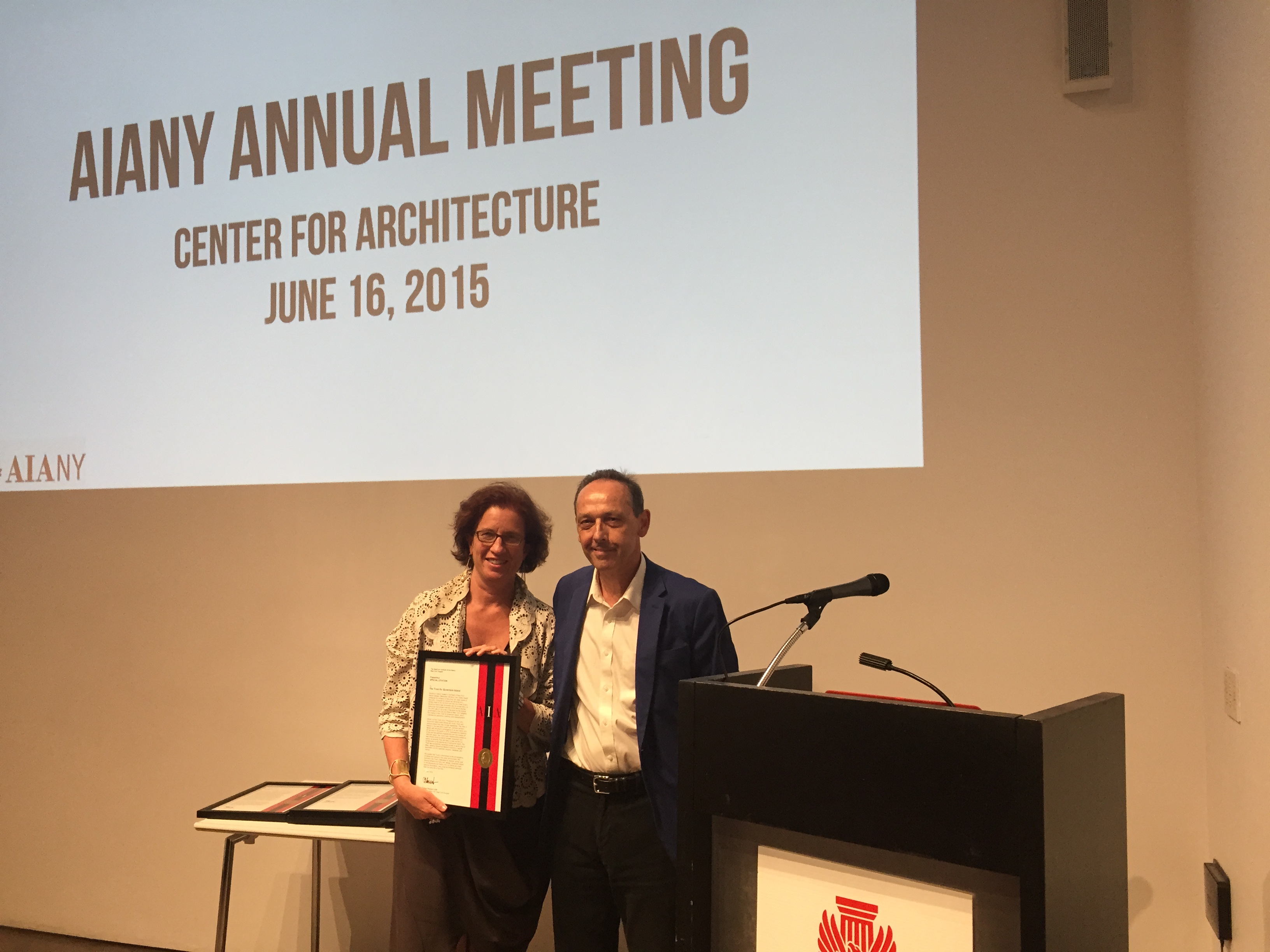by: Camila Schaulson Frenz
The AIANY Annual Meeting is a chance for members to come together and take care of business, voting on proposed bylaw amendments and confirming the following year’s leadership. This year, the Chapter voted in favor of creating a new board position, Director for Sustainability, which will be held by Laurie Kerr, FAIA, LEED AP, of the Urban Green Council. The meeting is also an opportunity to celebrate the progress and direction of the Chapter. AIANY President Tomas Rossant, AIA, also took advantage of this year’s meeting on 06.16.15 to speak truthfully to the audience about the future of the AIANY and the Center for Architecture.
Rossant started his presentation with some soul searching. “The Center for Architecture,” he noted, “has been open for 12 years now. I’m not sure what the analogy is in human years. It’s certainly not embryonic, it’s past its adolescence, maybe we have completed our graduate degree and moved back in to our parents’ house.” Whatever developmental stage we’re in, Rossant believes this is an ideal moment to ask ourselves, “What’s next? How to we set ourselves higher?”
He also noted that the AIA New York Chapter has a record-high 5,465 members, making it the largest AIA chapter in the nation, with some of the brightest and most innovative practitioners. Rossant, however, asked the audience: “Are we collecting their brain trusts effectively enough to deeply impact the future of cities, the future of the environment, and the future of public policy as it relates to the built environment?”
Our institution has grown and changed from two organizations, one large and one small (the AIA New York Chapter and the Center for Architecture Foundation, respectively), to two overlapping entities: the AIA New York Chapter and the newly-formed 501(c)3 Center for Architecture. For Rossant, the role of this new Center is to engage the public in order to raise the design IQ of the average New Yorker through thoughtful exhibitions and public programming. Why is this valuable? “If the public clamors for more architecture, for a better environment, and more equity in the design landscape,” he said, “we will get hired, we will get more jobs, and we will be able to bring our particular focus on humanism to improving the planet.”
Rossant also urged AIANY’s 27 program committees to take a more direct role in helping guide built environment policy by actively engaging with politicians and helping to prepare bills and reports for city agencies. These two strategies – raising the public’s design IQ and helping shape policy – will help us achieve our main mission as architects: improving the lives of people and the environment.
Rossant ended his speech by envisioning the future of the two organizations. While there are currently five separate AIA chapters in the city, one for each borough, he proposed bringing them all together into one chapter, AIANYC, that could work together to improve New York’s environment city-wide. This could potentially alter the future of the Center as well. Will we need to expand? Move to a larger location? Or maybe create pop-up locations throughout the city? It may be too soon to think this far ahead yet, but we’re looking forward to seeing where the next years take us.
The AIANY Annual Meeting also conferred the following awards to honor those who are making a difference in the Chapter and in our great city.
Vice Presidential Citation – Professional Development: Sandra Benjamin, AIA, LEED BD+C, Co-chair, AIANY Women in Architecture Committee
Vice Presidential Citation – Public Outreach: AIANY Global Dialogues Committee: Hana Kassem, AIA, and Dan Gallagher, AIA
Vice-Presidential Citation – Design Excellence: AIANY Health Facilities Committee: Jonathan Miller, AIA, and Jason Harper, AIA
Public Architect Award: Faith Rose, AIA, Executive Director, Public Design Commission of the City of New York
George S. Lewis Award: Metropolitan Transit Authority Arts & Design
Harry B. Rutkins Award: Venesa Alicea, AIA, LEED AP BD+C, Architect, Dattner
Andrew J. Thomas Award: Common Ground
Honorary Membership: Dr. Mindy Thompson Fullilove, Hon. AIANY, Professor of Clinical Studies of Sociomedical Sciences, Columbia University, Mailman School of Public Health
Special Citation: The Trust for Governors Island and Beverly Willis, FAIA, President, Beverly Willis Architecture Foundation

















